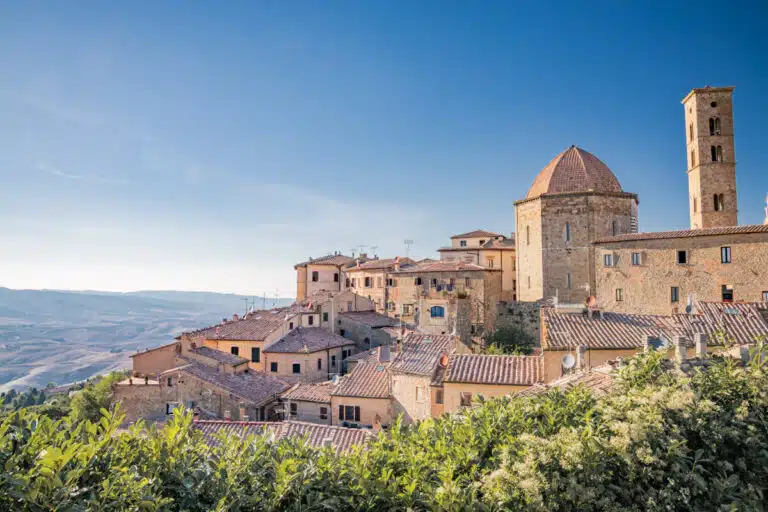
Home » Tuscany Travel Guide
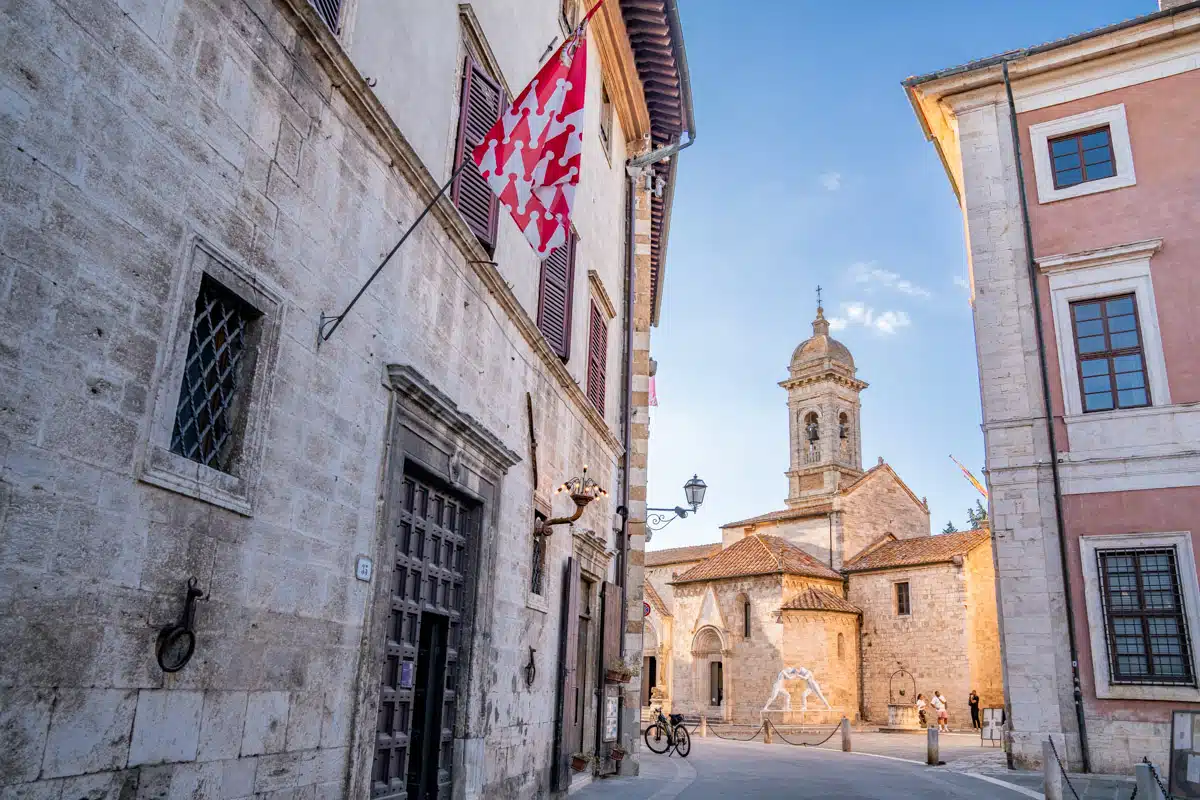
Planning an escape to the lush region of Tuscany? From exploring teetering hilltop towns to restaurants the locals don’t want you to know about, discover all you need to know about planning a trip with this Tuscany travel guide.
Tuscany is one of Italy’s most enchanting regions. Home to verdant hills and green valleys dotted with olive and cypress trees, medieval villages and vineyards producing bold wines, it’s bewitched many a visitor’s heart.
I’ve spent several stretches of time exploring this fabled region – most recently on a month-long research trip last October – and every time I go back, I love it that little bit more.
With so many places to see and ways to explore Tuscany, the difficulty is working out what to focus on for your trip. Try and do it all and you’ll end up a ragged mess. This guide will help you discover and experience this unique region for yourself. Let’s dive in!
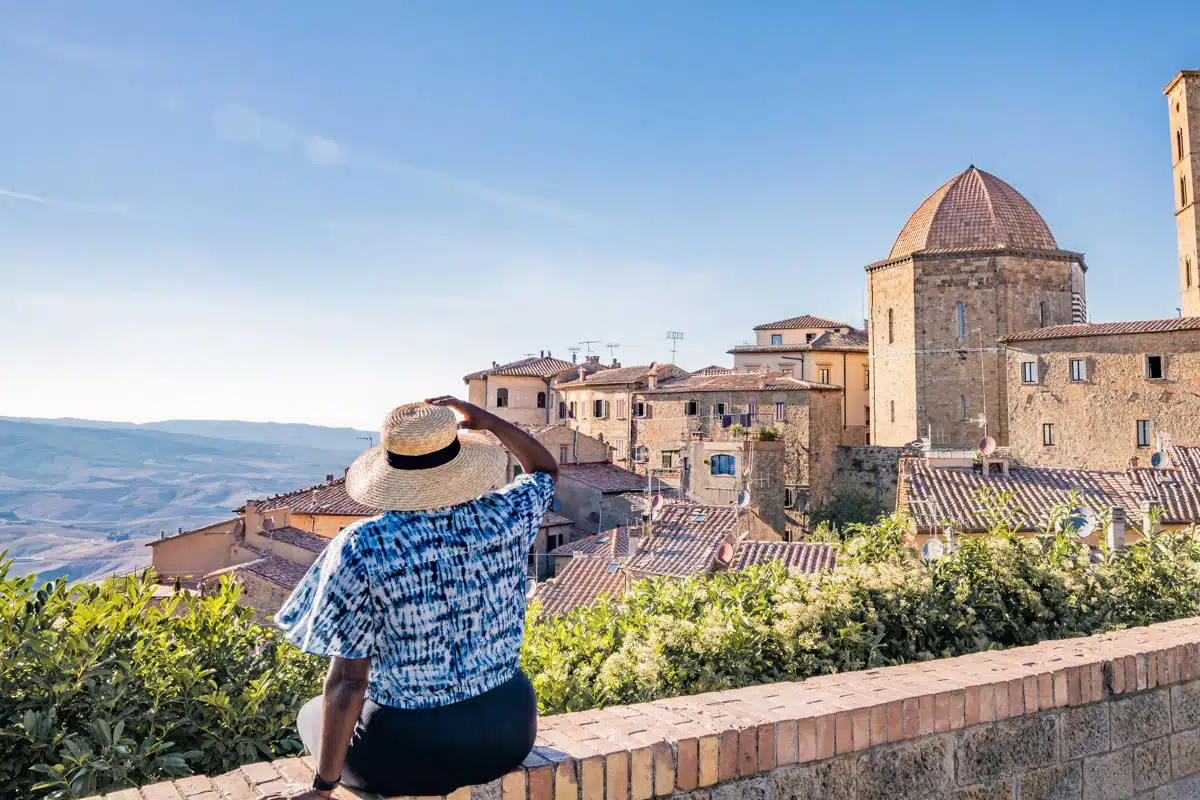
Tuscany’s Mediterranean climate brings warm, dry summers and cold winters. Summer (June to August) is the peak tourist season, but this often comes with soaring temperatures, crowded landmarks and hotel rates.
Spring, which runs from March to May, and autumn, from September to November, are Italy’s shoulder seasons and arguably the best times to visit Tuscany. These off–season months bring enjoyable weather and lower rates for top attractions and hotels.
Accommodation in Tuscany is abundant, giving you lots of options. From standard hotels to affordable hostels, and luxurious villas, Tuscany has lodging that will fit every budget. You can find the best hotels in Tuscany on Booking.com.
Pensiones are small traditional hotels available in most major cities and small towns. These lodgings are fantastic options if you travel to Tuscany on a tight budget – plus they often serve traditional food and hearty breakfasts.
Holiday Homes are another wonderful alternative if you’d like to avoid the crowds that hotels and hostels generally draw. Plum Guide offers a wide range of individually inspected holiday homes, giving you impeccable comfort.
I never travel without travel insurance – even in a destination that’s relatively risk-free like Tuscany. Whether it’s delayed baggage, cancelled flights or another emergency, it’s good to know you’re covered.
Sign up for insider tips straight to your inbox.
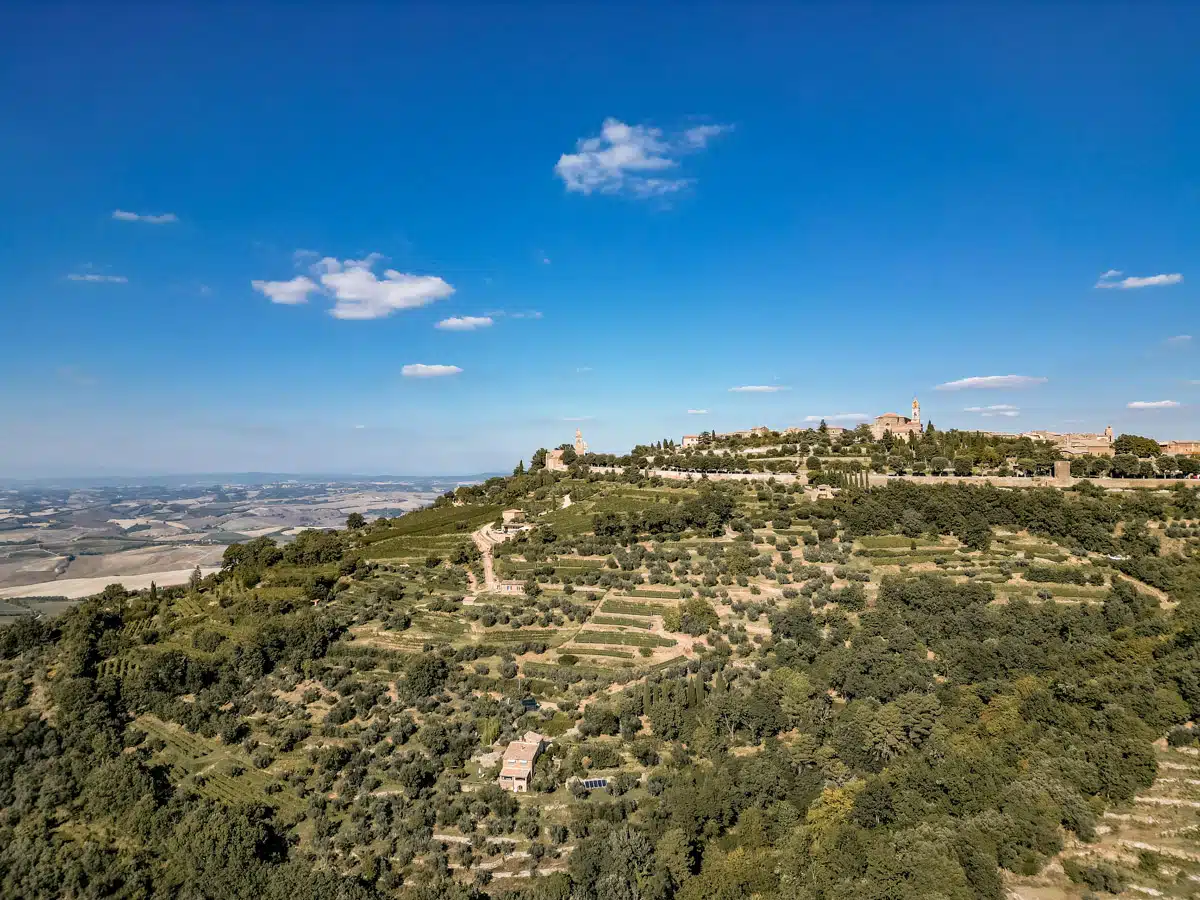
Welcome to Florence – a melting pot of art, culture and architecture clustered around an impossibly gorgeous historic centre. The UNESCO World Heritage Site has several museums, cathedrals, and a bustling town square. Plan to spend a minimum of two days here, but you’ll really need five to get to the heart of the city.
Of course, you have to see Michelangelo’s “David”, a world-renowned masterpiece of the Renaissance era, now housed in the Accademia. The sculpture was the first colossal marble statue after antiquity, setting a precedent for art in the 16th century and beyond.
How does sweeping views of Florence from atop Giotto’s Bell Tower sound? The 85-metre free-standing campanile, and the Duomo Cathedral, form an ionic complex in Florence.
Even so far back as the 14th century, it was clear that there was a problem with what’s affectionately known as the Leaning Tower of Pisa. Several centuries later, it may well be the world’s most famous architectural mishap.
Take the opportunity to climb this famous structure and marvel at the views of the Campo dei Miracoli and the rest of Pisa spread out below. If you’re a Renaissance architecture lover, the historic churches and mediaeval palaces make for an unforgettable time in Pisa.
Read Next: Unmissable Things to do in Pisa
Is there anywhere more bucolic than Chianti? With its cluster of historic towns and seemingly endless stretches of vineyard, a visit to Chianti is a must. Pop into Castello di Albola, Antinori and Castello di Verrazzano to sample some of the best wines in the region.
I tell no lies when I say that Siena is one of the must-visit places in Tuscany. The town centre is a Gothic architectural fantasy come true – and when you throw in an iconic cathedral, intriguing museums and a popping food scene, it’s easy to see why it should go straight to the top of your Tuscany itinerary.
Head to the impressive Duomo (cathedral), which somehow manages to be even more magnificent inside than out, or wander around the Santa Maria della Scala – an old hospital turned gallery across the road. Don’t miss the Piazza del Campo, which hosts Siena’s famous Palio horse races twice yearly – its oval shape is stunning at any time of year.
I know it’s wrong to have favourites but Lucca’s well-preserved Renaissance walls and historic city centre are special.
In any other part of the world, Lucca, with its quaint churches and historic palazzos, would be the main attraction – but sitting in the shadow of places like Pisa and Florence, it’s much more of a quiet gem.
Spend at least a day walking around the city walls and admire the city’s Romanesque buildings before heading to the gorgeous Palazzo Pfanner – a historical palazzo that was used as a filming location for Portrait of a Lady. Round it all off by booking a table at the legendary Buca di Sant’Antonio for a taste of real Lucchese cuisine.
Read Next: Lucca Travel Guide
If you conjure up a vision of the Tuscan countryside – one of rolling hills studded with honey-coloured towns and villages, olive groves and cypress trees glinting in the last glow of the day’s sun, you’re conjuring up an image of the Val D’Orcia.
This is arguably Tuscany’s most picturesque spot. Plan to spend days puttering from town to village, whether on foot or by car, heading to lesser-known spots like San Quirico D’Orcia and big hitters like Montepulciano and Montalcino.
Read Next: What You Need to Know About Visiting Val D’Orcia
If island life tickles your fancy, there’s no better place than Isola del Giglio. This tiny island on the Tyrrhenian Sea has a colourful port town, inviting pristine waters and unspoiled natural beauty.
“The Manhattan of the Middle Ages”, or San Gimignano, has more towers than all the hill towns in Tuscany. These colossal towers date back to 1300 and dominate the city’s skyline. Climb the highest one “Torre Grosso” for incredible views of the town and surrounding countryside.
10-14 days
Florence >> Chianti >> San Gimignano >> Siena >> Val D’Orcia >> Cortona >> Arezzo >> Pisa >> Lucca >> Florence
See the best of Tuscany on this 10-day itinerary, charting through some of the region’s better and lesser-known charms.
Read Next: The Ultimate 10-Day Tuscany Itinerary
There’s more to Tuscany than the Renaissance architecture that first meets the eye. It’s home to many off-the-beaten-path villages.
Montalcino is a hilltop settlement surrounded by vineyards and home to the best red wines you’ll taste in Italy.
Pistoia’s old city – complete with cathedral square and market district – are among the prettiest in Tuscany, all that’s missing is the crowds.
La Verna Monastery – Visit the very place where St Francis of Assisi is said to have experienced stigmata.
Pitigliano is another awe-inspiring town, sitting atop a large boulder made of tuff rock.
Choosing where to travel in Tuscany can be challenging if you have a low budget. But there are plenty of ways to enjoy yourself without breaking the bank.
Tuscany is home to many natural hot springs, like those at Bagni San Filippo, where you can soak your worries away for free.
Free Walking tours are also common practice in Tuscany. Locals lead tourists through the city in exchange for small tips.
Fettunta is a traditional Italian appetiser made with a slice of toasted bread, drizzled with olive oil and salt.
Panzanella – a chopped salad made with bread and sun-dried vegetables like tomatoes and onions, often topped off with olive oil and vinegar.
Fagioli all’uccelletto is a soup made of beans and tomatoes with sage.
Bistecca Fiorentina – genuine Chianina cow T-bone served rare.
Negroni – a cocktail made with equal parts of gin, sweet vermouth and Campari.
Chianti wine – a bold red blend from the Chianti Wine Region.
Alchermes – an ancient Italian liqueur made of rosewater, sugar, herbs, and spices.
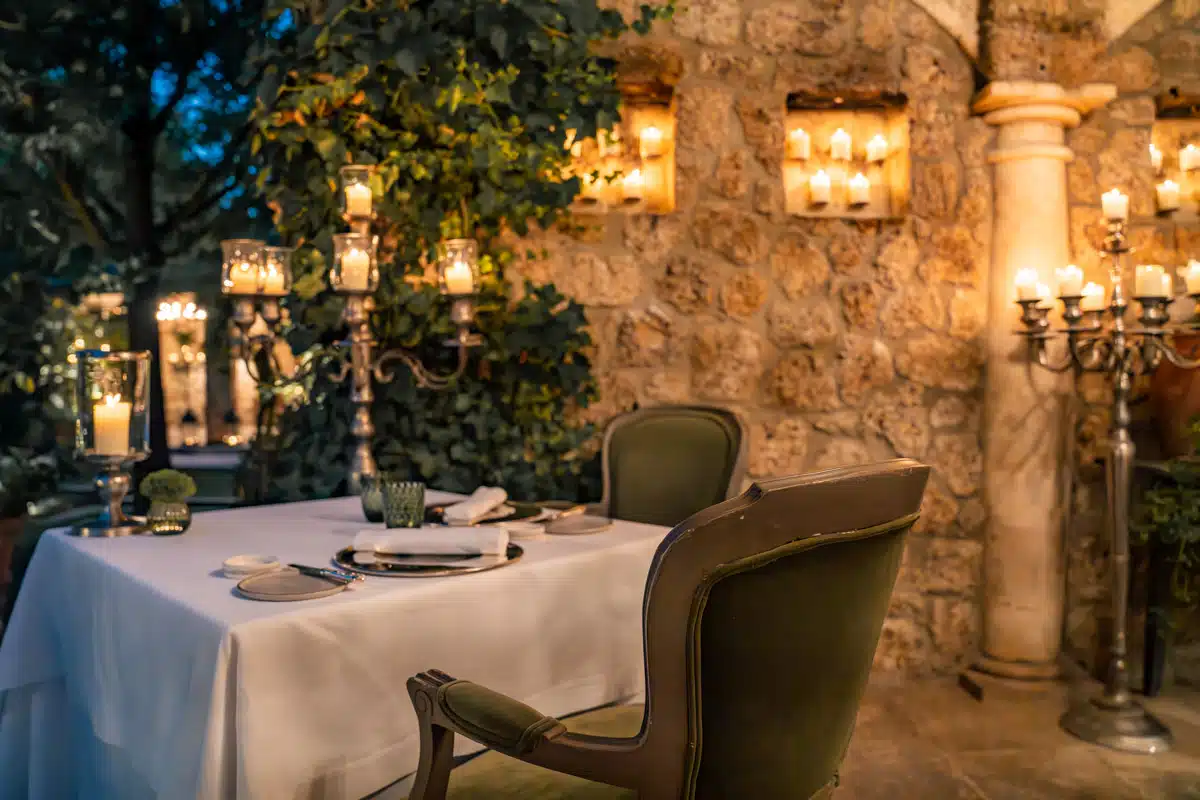
Saporium at Borgo Santo Pietro is undoubtedly one of Tuscany’s best restaurants, and one which recently received its Michelin star.
Go for the tasting menus, at €195 per person excluding wine they’re not cheap but showcase the true extent of the chef’s vision of a high-end menu using locally-sourced Tuscan ingredients.
Macelleria il Mattone Due is a local restaurant in Montaione run by a local butcher and specialising in steak. This really does feel like the kind of restaurants the locals don’t want you to know about – a gem of a place that serves stellar food.
Opt for the bistecca fiorentina – cooked to perfection and served simply with potatoes and vegetables in the restaurant’s small courtyard. It’s a steal too – with a meal for two with wine costing €106.
Buca di Sant’Antonio is not only one of the oldest restaurants in Lucca (it’s referred to by name in a document in 1782), it’s also one of the city’s best.
This charismatic restaurant serves traditional Lucchese cuisine. Go for the rabbit pate and tortelli lucchese – two local specialities that will light up your tastebuds. Expect to pay around €95 for two three-course meals with glasses of wine.
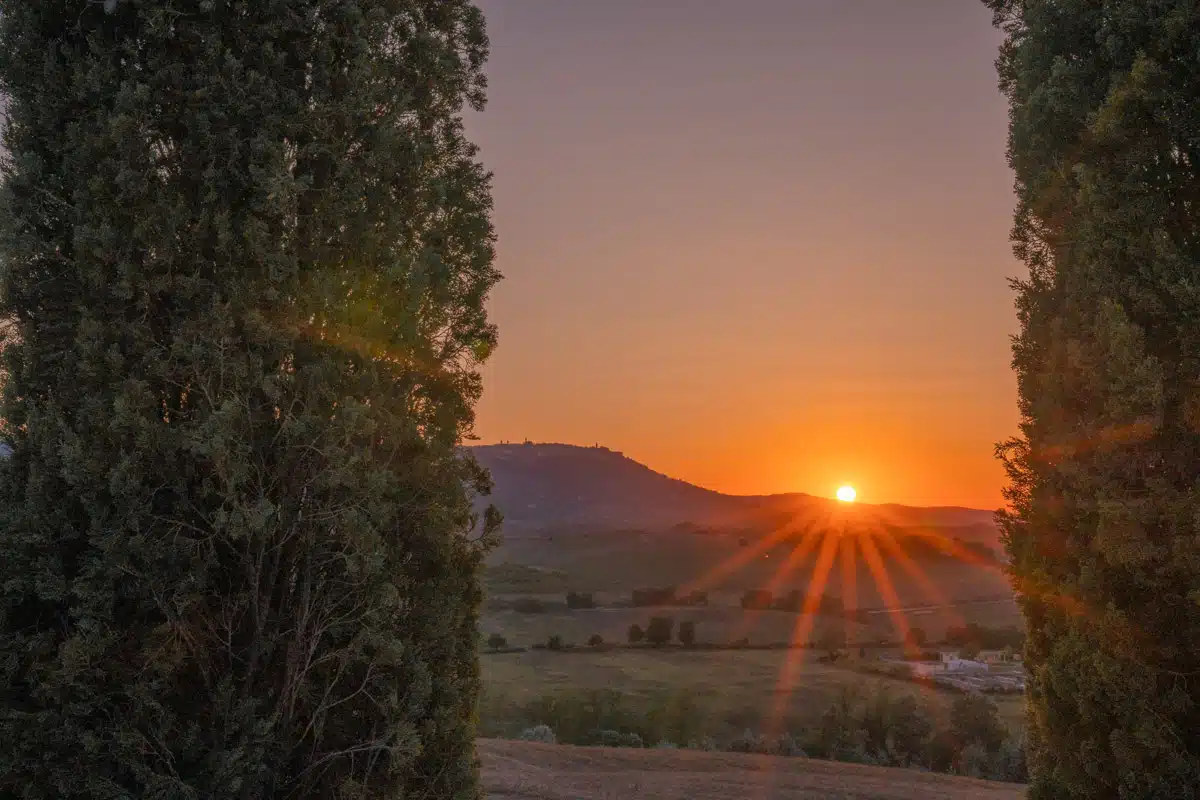
Tipping is not necessary in Tuscany, but restaurants often have a fixed percentage of the “service charge” – typically 10%. I would check this before you pay, and if you had great service, you’re welcome to add your own.
Ciao – Hello
Buongiorno – Good morning
Arrivederci or Addio – Goodbye
Per favore – Please
Grazie – Thank you
Prego – You’re welcome
Si/no – Yes/no
Scusami – Pardon me
Tuscany uses Central European Time (GMT+1) and Central European Summer Time (GMT +2) during the summer months .
Tuscany uses the EU standard plug types C and F, but you may also find type L outlets. Bring a universal electrical adapter if you’re visiting from outside the European Union.
There are no health risks associated with travelling to Tuscany specifically. The region’s tap water is safe to drink, and medical services are readily available.
Tuscany has a sophisticated road transportation system, so you can quickly get around the region without much hassle. The best way to get around Tuscany is via a rental car or bus, but you can also use the train if you’re sticking to better-connected places.
Tuscany is overall a safe place to visit. Violent crimes involving tourists are rare, though petty crimes like pickpocketing may occur in crowded areas.
Average Daily Costs in Tuscany:
Hotel:
Food:
Public Transport:
Attractions:
Tours:
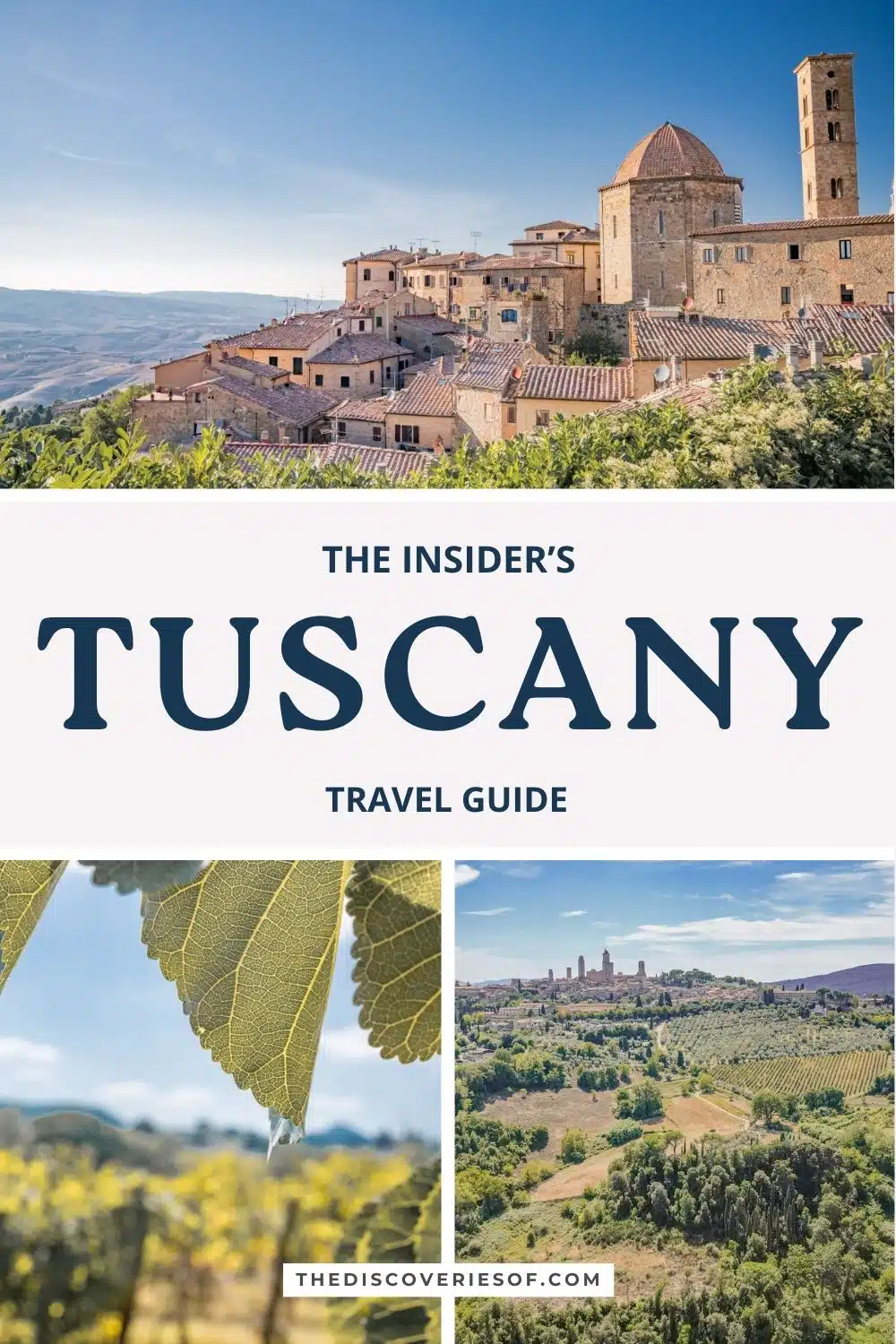
Follow me on Instagram for travel inspiration, tips, and guides.